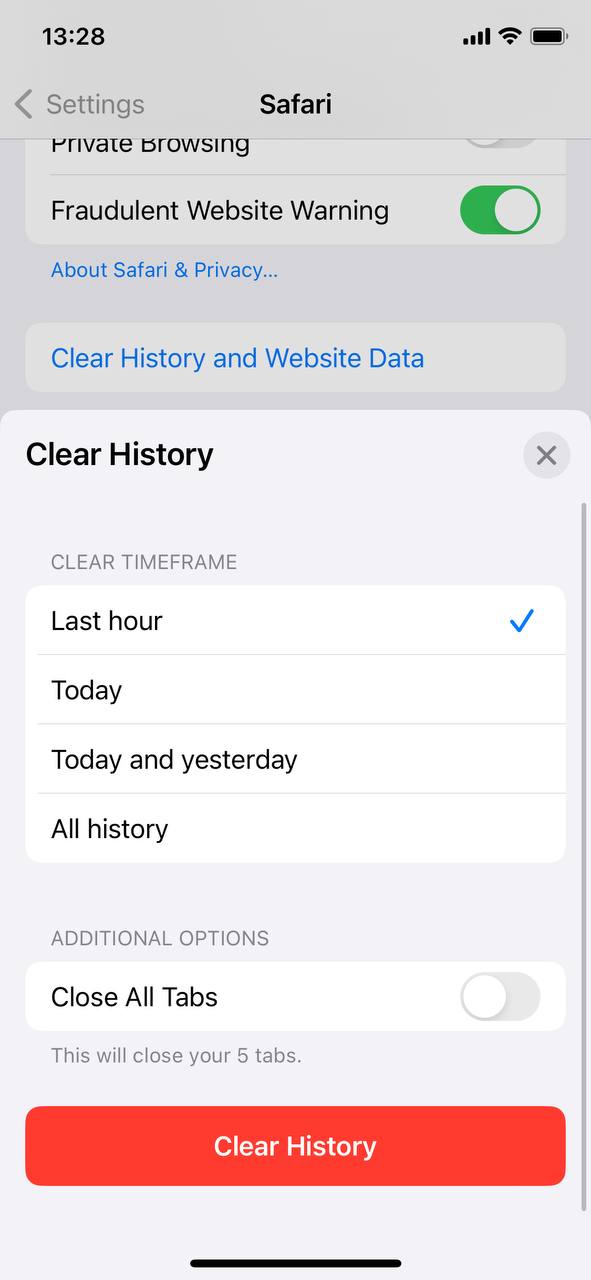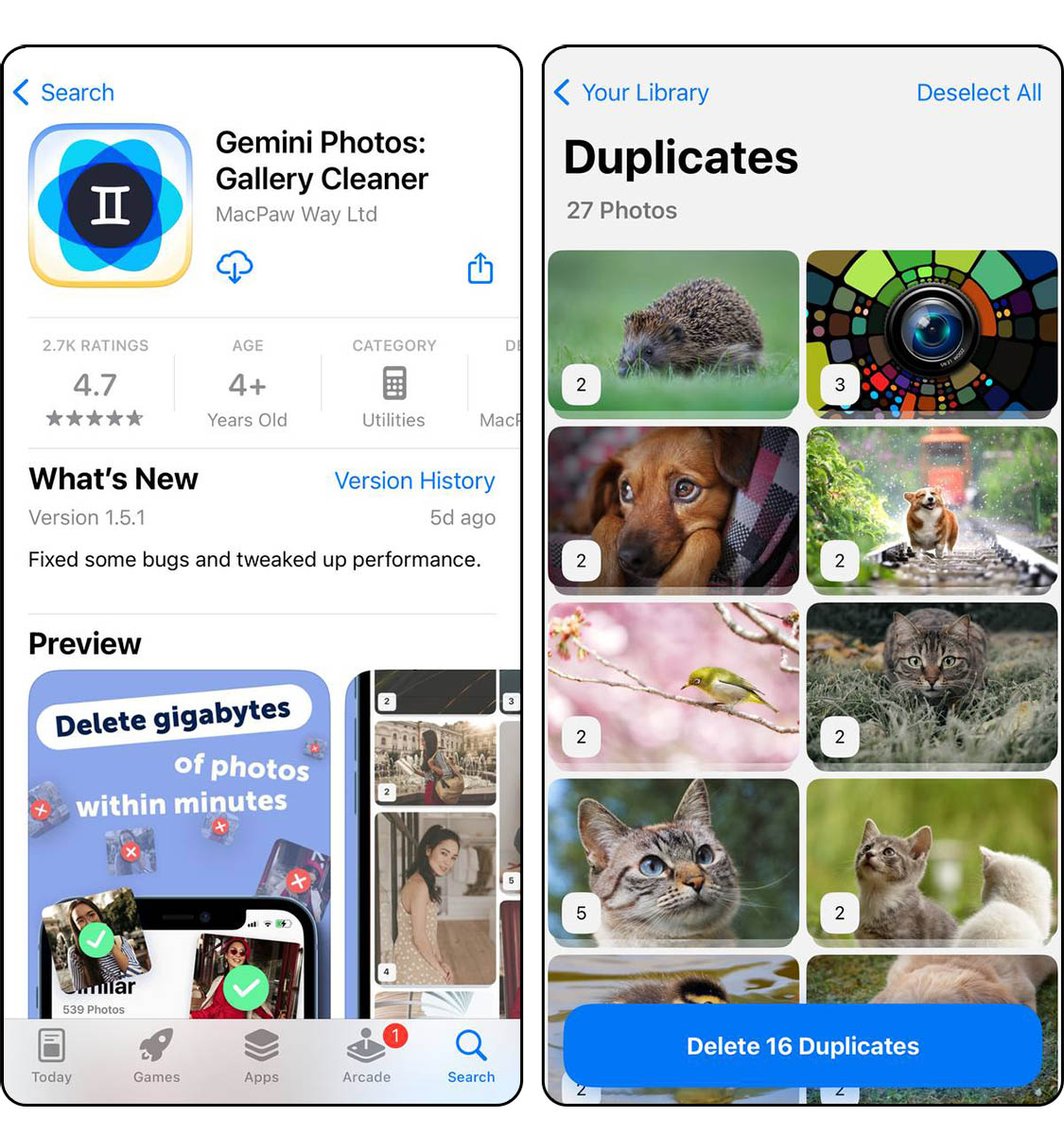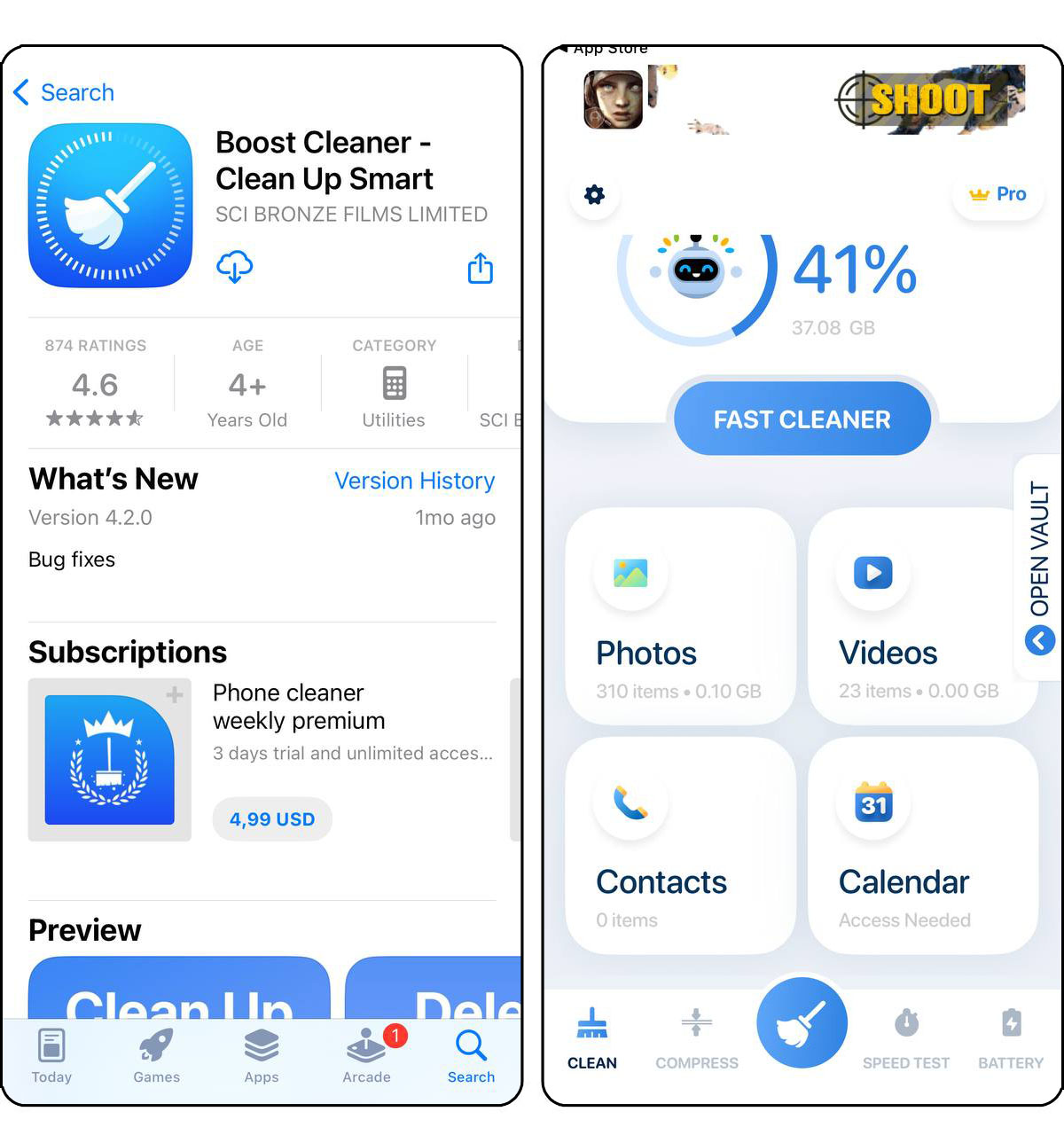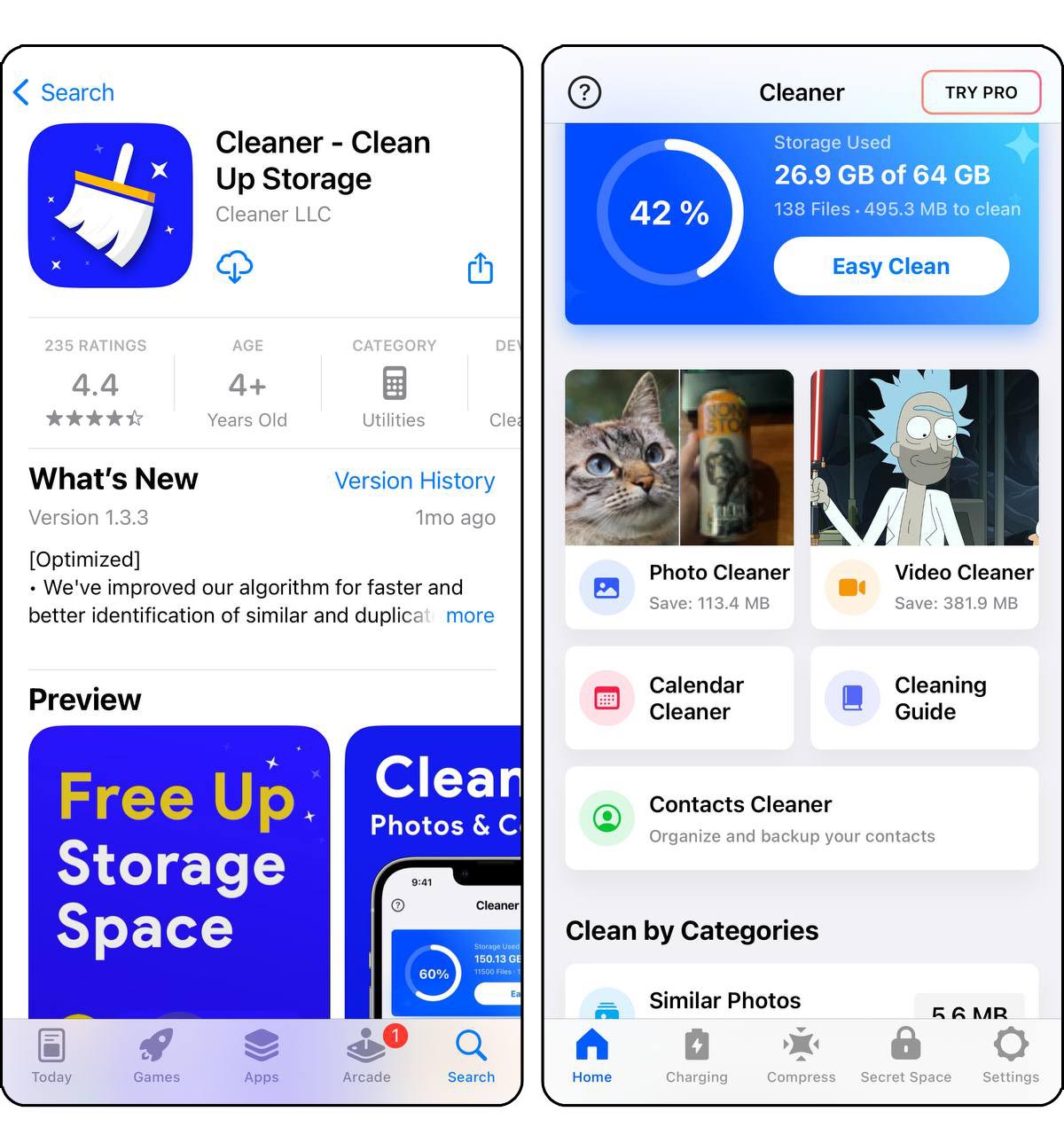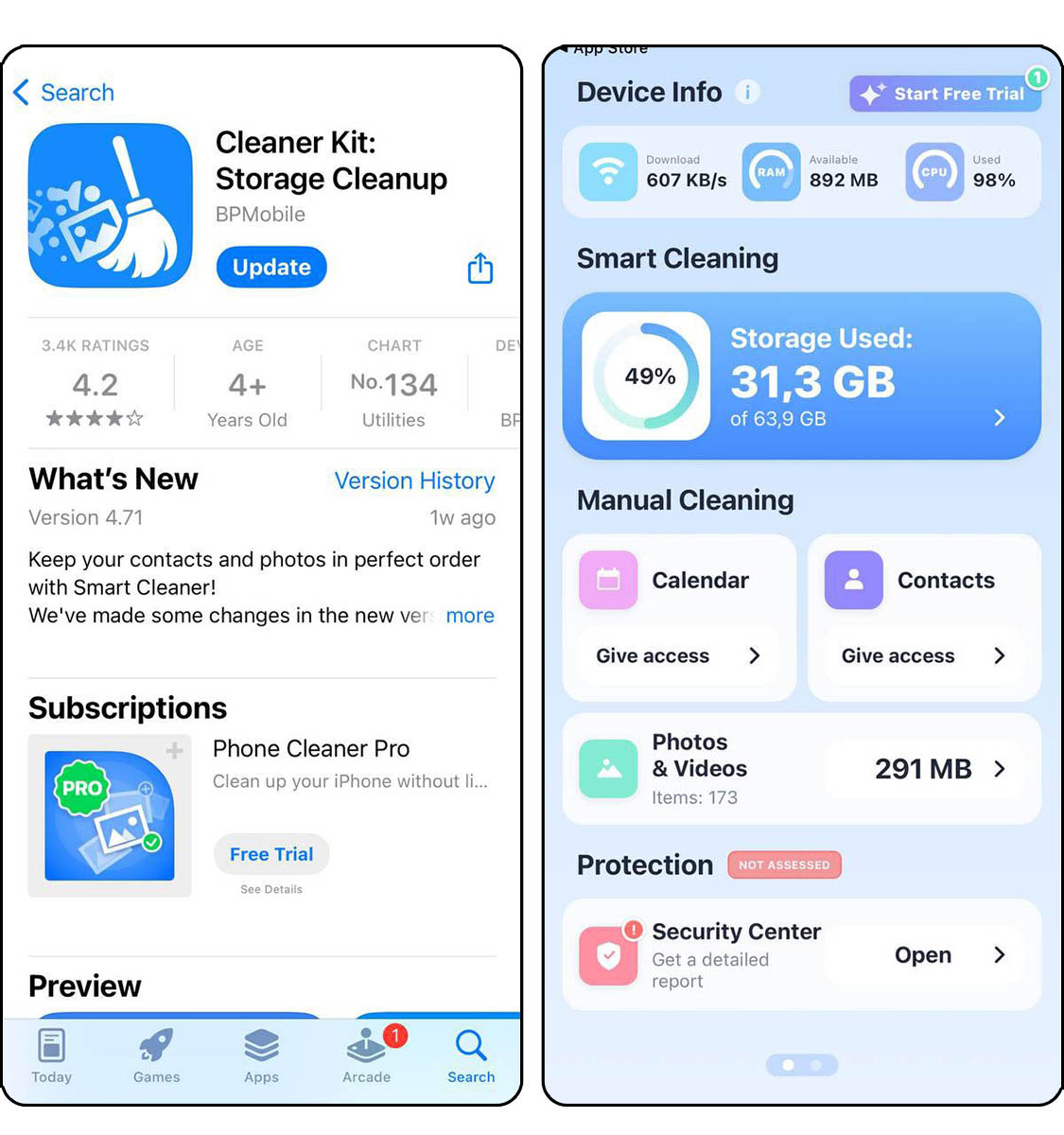Battling with a full iPhone can be frustrating. But don’t fret as here are few solutions and trusted methods to get more storage on iPhone. Learn how to maximize your device’s storage with easy and working advices. This guide is designed to help you understand and free up your iPhone’s storage, so your device meets your storage needs.
Check Storage Usage
Do you wonder how to free up space on your iPhone? First step in cleaning your iPhone’s storage is to check what consumes it. Here’s a step-by-step guide to check your storage and identify the main consumers of space.
- Check Overall Storage: Go to ‘Settings’ > ‘General’ > ‘iPhone Storage’. This shows a bar chart of storage use.
![check iphone storage]()
- Identify Main Storage Users: Look for sections like ‘Photos’, ‘Apps’, ‘Media’, and ‘System Data’ to see what’s using the most space.
- Apps can be significant space consumers. Tap on each app to see its storage usage details.
- Photos and videos often take up a lot of space too.
Now that you pinpointed what’s takes up most of your iPhone’s storage, the next step is learning how to clean it from all those storage hogs. The following section will guide you through freeing up space.
Basic Steps to Free Up Storage on iPhone
Now, let’s focus on how to free up space on your iPhone fast and easy.
Step 1: Uninstall Unused Apps
Firstly, focus on removing apps that you no longer need.
- Locate Unused Apps: Go to Settings > General > iPhone Storage to see a list of your apps and the space they occupy.
- Delete Apps: Tap on an app and select ‘Delete App’ to remove it along with its data.
![Uninstall Unused Apps]()
Step 2: Clear Browser Data
Next, focus on clearing data from your web browser.
- Go to Safari Settings: Open Settings, scroll down and tap on ‘Safari’.
- Clear History and Data: Choose ‘Clear History and Website Data’ to free up storage used by browsing data.
![Clear Browser Data]()
Step 3: Use iCloud for Photos
Offloading your photos to iCloud can save significant amount of space.
- Enable iCloud Photos: In Settings > Photos, turn on iCloud Photos. This will upload your media to iCloud.
- Choose Storage Option: Select ‘Optimize iPhone Storage’ to keep smaller versions of your photos and videos on your iPhone.
![Use iCloud for Photos]()
Step 4: Delete Large Message Attachments
Last but not least is to free up space taken by large files in your messages.
- Access Message Attachments: Go to Settings > General > iPhone Storage, then scroll down and tap on ‘Messages’.
- Review and Delete: Here, you can find and delete large attachments, such as photos and videos, that you no longer need.
![Delete Large Message Attachments]()
Following the steps outlined above typically frees up enough space for most iPhone users. However for those who need additional space, there’s more ways to expand your iPhone’s storage capacity, to ensure you always have enough space for your needs.
Additional Ways to Get More Storage on iPhone
For users in need to significantly increse storage on iPhone, there are couple more technical solutions to consider.
Method 1: Use Cleaning Apps to Get More Storage
Even after applying basic steps, cleaning apps offer an additional layer of optimization for your iPhone’s storage.
- Deep Cleaning: These apps often look deeper than user during manual cleaning, targeting hidden caches, old backups, and forgotten downloads that consume space silently.
- Automated Process: Unlike manual cleaning, these apps provide a hassle-free, automated process to scan and clean, saving time and ensuring thoroughness.
- Regular Monitoring: Many cleaning apps offer continuous monitoring, alerting you when your storage starts to fill up again, which helps to maintain some free space for unexpected needs.
For those who need to go beyond basic cleaning, specialized iPhone cleaning apps can offer a solution. These apps can help clear out not only obvious clutter but also dig into less noticeable areas where redundant or unnecessary files linger. Some of the apps we recomend to try:
- Easy Cleaner.: This app excels in tidying up your contacts. It scans for duplicate contacts, merges them, and cleans up your address book. Its smart filters and restore points make managing contacts easier, ensuring that your phone’s address book remains organized and efficient.
![Easy Cleaner.]()
- Gemini Photo: Gemini Photos focuses on your photo library. It identifies similar and duplicate photos, suggesting which ones to keep or delete. Its Photo Radar continuously monitors your storage, helping to manage large photo libraries effectively and free up significant space.
![]()
- Boost Cleaner: A versatile cleaner, Boost Cleaner is user-friendly and effective for clearing various types of data. It targets duplicate photos, helps in organizing images by date and location, and also assists in managing contacts, including merging duplicates and backing up contact data.
![Boost Cleaner]()
- Cleaner for iPhone: This app offers good cleaning solution. It quickly identifies duplicate or similar photos, merges duplicate contacts, and locates large video files. It’s designed to be a one-stop solution for storage management, making it easier to maintain iPhone’s storage.
![Cleaner for iPhone]()
- Cleaner Kit: As an all-in-one cleaning app, Cleaner Kit provides tools for contact organization, battery saving tips, privacy protection, and duplicate photo removal. It’s particularly useful for decluttering various aspects of your iPhone and automating storage management.
![Smart Cleaner]()
Method 2: Utilize External Storage Solutions
External storage solutions are ideal for those who regularly deal with large files or have maxed out their device’s internal capacity. These solutions include:
- Flash Drives for iPhone: Portable flash drives designed for iPhone connectivity offer an easy way to transfer and store files externally. They are perfect for offloading large files like high-resolution photos and videos, freeing up significant space on your device.
- Cloud Services: Cloud storage options like Google Drive, or Dropbox provide remote storage space. These services are ideal for keeping a backup of your data and accessing it from any device. They are particularly useful for storing media files and documents, allowing you to keep your iPhone’s internal storage for apps and essential data.
Whether it’s through physical devices like flash drives or cloud-based services, external storage solutions offer additional way to add more storage to your iPhone, especially beneficial for users with high storage demands.
Common Mistakes To Avoid
After exploring various ways to increase storage on your iPhone, it’s important to address common errors that can occur in the process. Avoid these mistakes to ensure you don’t lose valuable data.
- Don’t Delete Files Hastily: In the urgency to free up space, there’s a risk of accidentally deleting important files. Take time to review what you’re removing.
- Forgetting to Backup: Ensure you have a backup of your data before starting any cleaning process. Utilizing iCloud or other backup services can prevent loss of critical data.
- Overlooking App Cache: Regularly clear cached data from apps and browsers, which can accumulate and use up a lot of space.
- Infrequent Cleaning: Consistent maintenance is key. Regular checks and cleaning can prevent unexpected storage issues.
- Untrusted Cleaning Apps: Use only reputable cleaning apps. Some apps might not be effective or could even pose security risks.
Keeping these points in mind helps to avoid a lot of hassle while getting more storage.
Conclusion
Wrapping up, keeping your iPhone’s storage in check is easier than you think. The tips and methods shared here are practical and user-friendly. Regularly applying these simple advices will keep storage issues at bay, making your iPhone experience better and clutter-free. So go ahead, give these tips a try and see the difference they make in your daily iPhone use.
FAQ
The post How to Get More Storage on iPhone Running iOS 17 appeared first on InsanelyMac Blog - Mac and iOS Reviews.


